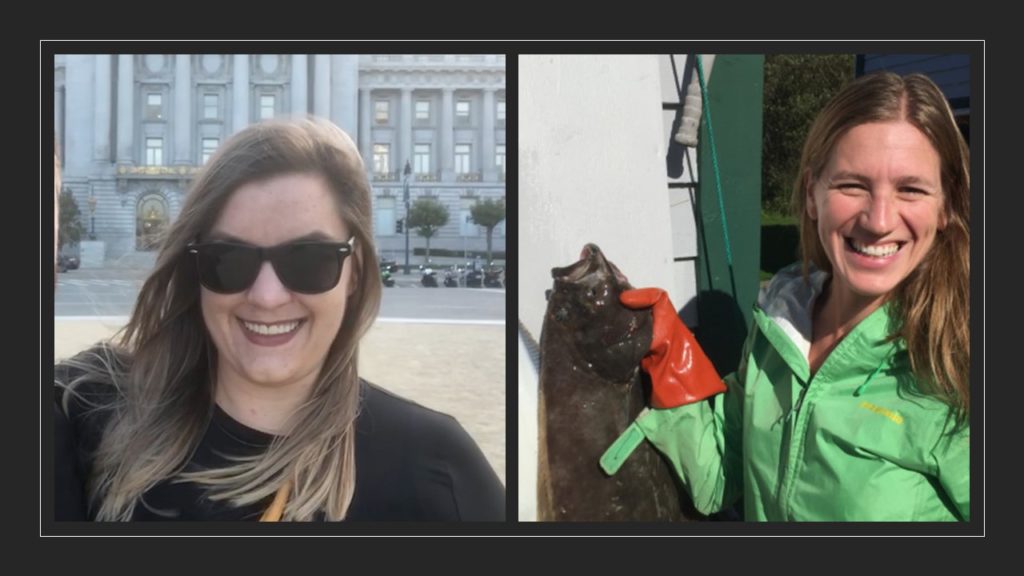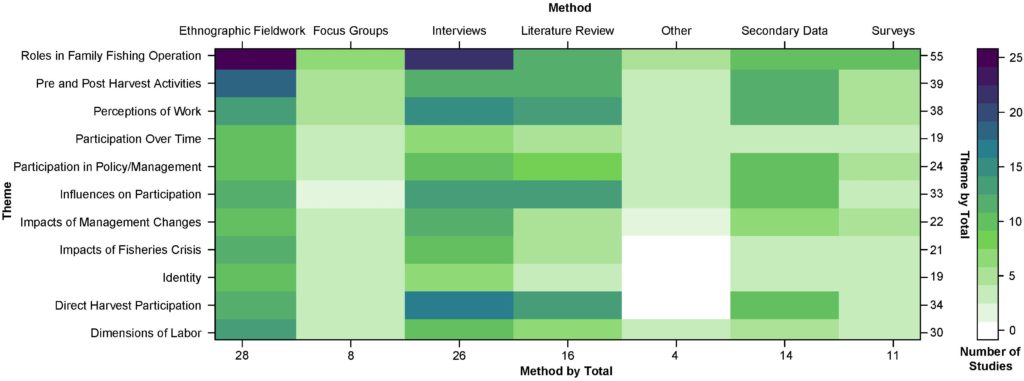
Despite evidence of women’s contribution to the sustainability of fisheries worldwide, their roles in fisheries remain poorly understood and most often unrecognized altogether. The main hurdle in assessing women’s contribution is the lack of gender disaggregated data in fisheries, a well understood and nearly universal impediment to understanding women’s participation. Simply put, the majority of countries do not collect gendered data on fisheries participants and hence cannot track changes of a gendered nature that may reveal key insights into changes within a fishery. From small scale fisheries in developing countries to industrialized fisheries, there is a systematic gap in the availability of data that provide information on the types of work that women do. In addition, the research on women’s engagement in fisheries has largely focused on small-scale fisheries in a development context, limiting the applicability of the findings to other parts of the world.

Our recent study [1] published in Frontiers in Marine Science (available here) seeks to address these gaps. We began by extending the geographic scope to Europe and North America to assess the current state of knowledge through a systematic literature review, allowing us to explore how women’s fisheries participation has been examined in developed countries. We then present a mixed-methods approach to illuminate the multifaceted dimensions of women’s fisheries engagement. The latter includes a novel mechanism for integrating a gender attribute into fisheries datasets using limited personal information and open source software.
When examining women’s participation across developed countries, we found that similarly to developing countries women’s engagement across multiple fisheries sectors and various roles is intertwined, complex, and dynamic. Indeed there are pronounced similarities between women’s participation in both developed and developing world contexts – highly responsive to family conditions and largely engaged through family operations with continued barriers to access. At the same time, there is evidence that women’s fisheries participation in developed countries is actually more constrained than in developing countries, which may be attributed to the industrial, offshore nature of fisheries in the former compared to the extensive nearshore sector in the latter that allows women to concurrently navigate their maternal responsibilities.
The literature review we conducted also demonstrated the extensive reliance on non-quantitative social science research methodologies or primary data collections at small scales to examine women’s participation in fisheries. While allowing for a deep understanding of that engagement within a defined geographic area, such studies often suffer from a lack of generalizability and are therefore often ignored by policymakers in the context of larger scale decision making. The lack of gender disaggregated data is a key impediment to extending these methodologies that is frequently cited by researchers.
One of the key contributions of this study was to identify a method for incorporating a gender variable into existing fisheries datasets. Using the open source software R, we were able to predict the gender of individuals using only first names and, in some cases, birth years. We tested the predictive accuracy of these methods against datasets with known gender and found the methods to have an extremely high accuracy – of over 95%. The capacity to readily incorporate gender into fisheries datasets opens up a whole new arena for examining women’s fisheries participation, using quantitative methods to, for example, examine upward mobility, gendered effects of policy decisions, and women’s responses to changing fishery conditions.
We further applied this method to the Alaska fisheries context to examine women’s participation as crew license and permit holders – the latter of which denotes greater empowerment in terms of having an access privilege. By doing so, we were able to show gender differences in representation among these two harvester groups – with women accounting for a comparatively greater percentage of crew than permit holders. While the reasons for this disparity are uncertain, it points to both the utility of being able to examine gender as a variable even within a simple examination of participation over time. Additionally, it demonstrates the necessity of coupling quantitative methods with qualitative data gathering in order to provide a fuller picture of women’s fisheries engagement.
Therefore, we also demonstrate the application of focus groups across Alaska fishing communities in informing a nuanced understanding of women’s engagement in fisheries. (The comprehensive results from this mixed methods approach were published in Marine Policy [2] earlier this year.) With focus groups held across the seven largest fishing communities along the Gulf of Alaska, the resulting discourse provided information for each of the areas that we identified in the literature with respect to the dynamics of women’s engagement, such as support of fishing family operations, pre and post-harvest activities, and barriers to participation. These discussions provided information on how, for example, women in Alaska’s fisheries play a key adaptive role within fishing families in terms of switching between onboard support and onshore employment to buffer family incomes. Furthermore, women continue to be the primary caregivers in families so that the addition of children into families often results in a switch to gender traditionalism in terms of parenting obligations. These nuances help to inform the disparities between women’s representation among crew license and permit holders that are evident in the data but could not be readily understood without this discourse.
While this methodological approach is imperative to extending our understanding of women’s fisheries engagement, it does not in any way replace well-articulated calls by fisheries researchers worldwide for the collection of gender disaggregated data. The establishment of new, gender disaggregated datasets that consider women’s participation across multiple, often ignored and devalued links in the fishery value chain is necessary for the equitable management of fishery resources. By triangulating research findings with multiple methods and systematically, quantitatively examining women’s participation in fisheries, it illuminates a once invisible group to fisheries policymakers to be aware of women rather than to espouse gender blind practices.
*Marysia Szymkowiak is a Social Scientist with the National Marine Fisheries Service’s Alaska Fisheries Science Center, based out of Juneau, Alaska. Melissa Rhodes-Reese works for the Pacific States Marine Fisheries Commission also based out of Juneau.
References
[1] Szymkowiak, M., & Rhodes-Reese, M. (2020). Addressing the Gender Gap: Using Quantitative and Qualitative Methods to Illuminate Women’s Fisheries Participation. Frontiers in Marine Science, 7, 299. 16pp.
[2] Szymkowiak, M. (2020). Genderizing fisheries: Assessing over thirty years of women’s participation in Alaska fisheries. Marine Policy, 103846. 13 pp.
This entry was posted in: Fisheries, Gender, Men, USA, Women